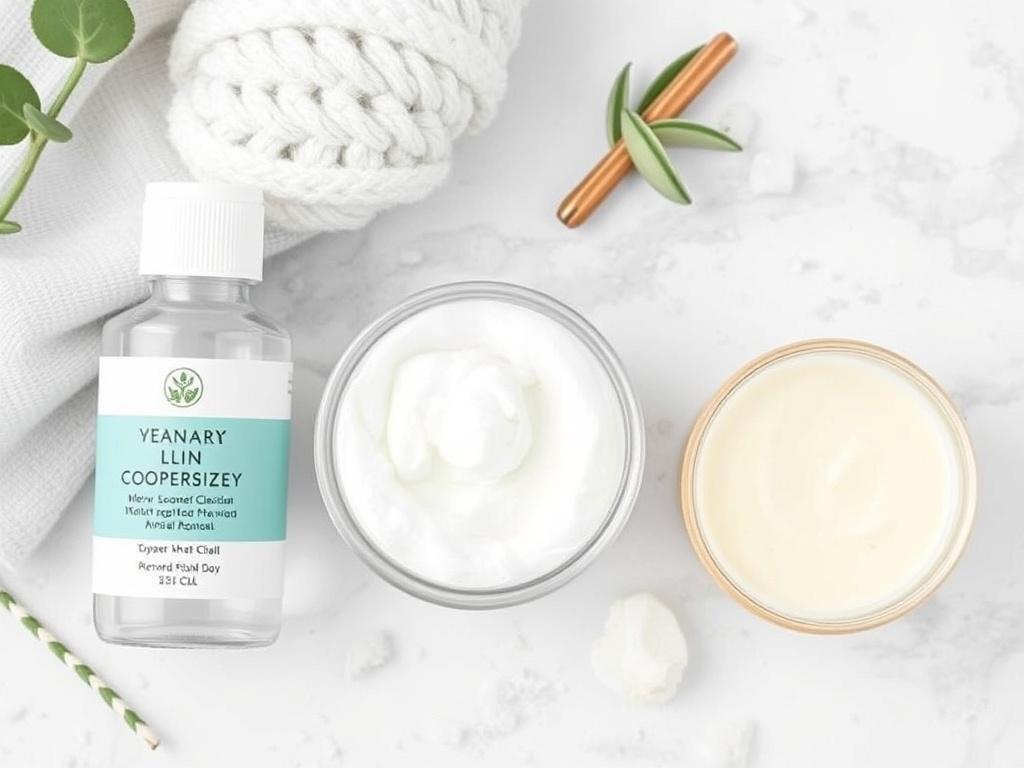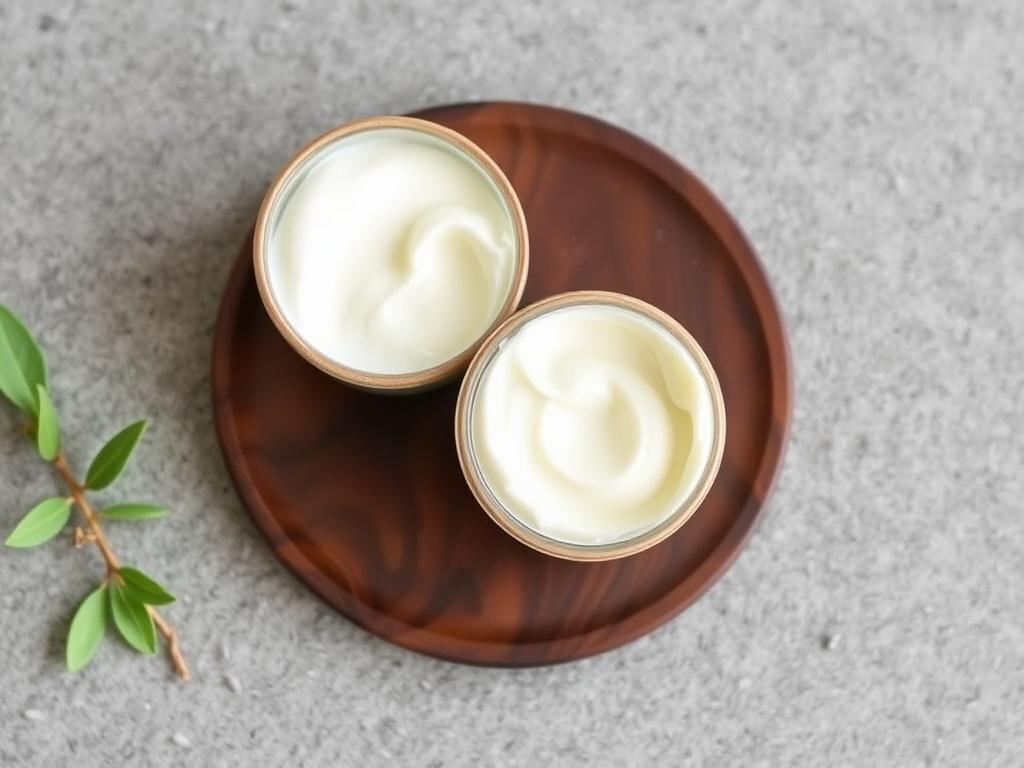Содержание статьи
- 1 Why Choose DIY Natural Moisturizers?
- 2 Essential Ingredients for DIY Natural Moisturizers
- 3 How To Prepare Your DIY Natural Moisturizer
- 4 DIY Natural Moisturizer Recipes You Can Try Today
- 5 Tips for Using and Storing Your Natural Moisturizers
- 6 How to Customize Your Moisturizer Based on Skin Type
- 7 Additional Benefits of Using Homemade Natural Moisturizers
- 8 Common Questions About DIY Natural Moisturizers
- 9 The Environmental Impact of DIY Skincare
- 10 Where to Buy Quality Ingredients for Your DIY Natural Moisturizers
- 11 Final Thoughts
When it comes to skincare, many of us want products that are effective and gentle, without any harsh chemicals or synthetic ingredients. That’s where DIY natural moisturizers come in. Making your own skincare products is not only fun but also allows you to know exactly what you’re putting on your skin. You can tailor these moisturizers to your skin type, climate, and preferences. Whether you have dry, oily, or combination skin, there’s a homemade moisturizer recipe that will work perfectly for you. In this article, we’ll explore how to create nourishing, natural moisturizers you can make at home, the benefits of going natural, and essential ingredients to keep your skin glowing and hydrated.
Why Choose DIY Natural Moisturizers?

Many commercial moisturizers contain preservatives, artificial fragrances, and chemicals that can irritate sensitive skin or cause breakouts. DIY natural moisturizers offer a simple, affordable, and eco-friendly alternative. When you make a natural moisturizer yourself, you get:
- Complete control over the ingredients used
- Freshness and purity without preservatives
- Customization for your skin’s unique needs
- Cost savings compared to high-end products
- Less environmental impact—no plastic waste or harmful chemicals
Not only does a natural moisturizer hydrate your skin, but it also nourishes it with vitamins, antioxidants, and fatty acids. These ingredients help maintain your skin’s natural barrier and keep it supple and youthful-looking.
Essential Ingredients for DIY Natural Moisturizers
Before diving into recipes, it’s important to understand the key natural ingredients you can use to create effective moisturizers at home. Using high-quality, fresh ingredients ensures the best results.
Oils and Butters
Oils and butters form the base of most natural moisturizers, providing hydration and locking in moisture.
| Ingredient | Benefits | Best For |
|---|---|---|
| Coconut Oil | Antibacterial, deeply moisturizing, contains lauric acid | Normal to dry skin; avoid if acne-prone |
| Shea Butter | Highly moisturizing, anti-inflammatory, rich in vitamins A and E | Dry, sensitive, or aging skin |
| Jojoba Oil | Mimics skin’s natural sebum, non-comedogenic | All skin types, especially oily and acne-prone |
| Sweet Almond Oil | Lightweight, rich in vitamin E, soothes skin | Normal to dry skin |
| Avocado Oil | Rich in fatty acids and antioxidants, deeply nourishing | Dry, mature, or irritated skin |
Hydrating Ingredients
Besides oils and butters, incorporating water or hydrating extracts helps to replenish your skin’s moisture.
- Aloe Vera Gel: Soothing, anti-inflammatory, great for all skin types
- Rose Water: Refreshing toner properties, balances skin pH
- Honey: Natural humectant, draws moisture to the skin, antibacterial
- Calendula Infusion: Calming and healing, ideal for sensitive skin
Essential Oils
Essential oils bring a lovely aroma and additional skin benefits, but they should be used sparingly as they can be potent.
- Lavender – Calming and soothing
- Tea Tree – Antibacterial and acne-fighting
- Chamomile – Anti-inflammatory and calming
- Geranium – Balances oil production and tones skin
Always do a patch test before applying any essential oils to ensure no allergic reactions.
How To Prepare Your DIY Natural Moisturizer
Making your own moisturizer is easier than you think. Here’s a simple step-by-step approach to guide you through the process:
- Choose Your Ingredients: Depending on your skin type and the benefits you want, select oils, butters, and hydrating agents.
- Melt & Mix: If using solid butters like shea or cocoa butter, gently melt them using a double boiler or microwave in short bursts.
- Add Oils: Mix in your chosen carrier oils after melting the butters.
- Add Hydrating Component: Slowly add aloe vera gel, honey, or floral water to the oily base while stirring.
- Incorporate Essential Oils: Add just a few drops of your preferred essential oils for fragrance and added benefits.
- Cool & Store: Pour the mixture into a clean jar and let it cool. Store in a cool, dark place or refrigerate for longer shelf life.
DIY Natural Moisturizer Recipes You Can Try Today
Let’s dive into some easy recipes that you can make at home using ingredients you might already have.
1. Simple Shea Butter Moisturizer
This rich, creamy moisturizer is perfect for dry or sensitive skin, delivering intense hydration and soothing properties.
- 1/4 cup shea butter
- 2 tablespoons sweet almond oil
- 1 tablespoon coconut oil
- 10 drops lavender essential oil
Gently melt the shea butter and coconut oil. Stir in sweet almond oil and lavender oil. Whip with a hand mixer for a fluffy texture. Transfer to a jar and use daily.
2. Aloe and Jojoba Lightweight Moisturizer
Ideal for oily or combination skin, this moisturizer hydrates without clogging pores.
- 2 tablespoons aloe vera gel
- 1 tablespoon jojoba oil
- 1 teaspoon rose water
- 5 drops tea tree oil (optional)
Mix all ingredients thoroughly. Apply a small amount to clean skin for a light, refreshing feel.
3. Honey and Avocado Nourishing Cream
This recipe harnesses the moisturizing and healing power of honey and avocado for a deeply nourishing treatment.
- 1/2 ripe avocado, mashed
- 1 tablespoon raw honey
- 1 teaspoon avocado oil
- 5 drops chamomile essential oil
Combine the mashed avocado and honey until smooth. Stir in avocado oil and chamomile oil. Apply a thin layer to your face, leave for 15 minutes, then rinse off or use as a moisturizer.
Tips for Using and Storing Your Natural Moisturizers

Since DIY natural moisturizers don’t contain preservatives, proper storage is crucial to keep them fresh and safe.
- Use Clean Hands or Tools: Avoid contaminating your moisturizer by using spatulas rather than fingers to scoop it out.
- Store in Glass Jars: Glass containers preserve the product better than plastic and are easier to clean.
- Keep Refrigerated: Especially if your moisturizer contains water or fresh ingredients like mashed fruits.
- Use Within 2-3 Weeks: Watch for changes in smell, color, or texture; discard if any signs of spoilage occur.
How to Customize Your Moisturizer Based on Skin Type
Knowing your skin type helps you choose ingredients that will nourish without irritation.
| Skin Type | Recommended Oils & Butters | Ingredients to Avoid |
|---|---|---|
| Dry Skin | Shea butter, coconut oil, avocado oil, honey | Alcohol-based extracts, heavy fragrances |
| Oily Skin | Jojoba oil, grapeseed oil, aloe vera gel | Coconut oil (can clog pores), heavy butters |
| Sensitive Skin | Calendula infusion, sweet almond oil, aloe vera | Strong essential oils like peppermint, citrus oils |
| Combination Skin | Light oils like jojoba, rosehip, aloe vera gel | Heavy butters in large quantities |
Additional Benefits of Using Homemade Natural Moisturizers
Besides moisturizing, making your own skin care products has added benefits. It encourages you to build a mindful skincare routine, reduce your carbon footprint by avoiding disposable packaging, and engage creatively with natural ingredients. Experimenting with DIY recipes can also save money and help avoid allergic reactions caused by preservatives or synthetic compounds in commercial products.
Stress Relief and Aromatherapy
Adding essential oils like lavender or chamomile turns your moisturizer into an aromatherapy experience. The calming scent can reduce stress and improve your mood while conditioning your skin.
Less Chemical Exposure
Every day, our skin absorbs chemicals from lotions, makeup, and the environment. Choosing natural moisturizers reduces exposure to unnecessary industrial chemicals, supporting healthier skin over time.
Common Questions About DIY Natural Moisturizers
Are natural moisturizers less effective than commercial ones?
Not at all! Natural moisturizers are often just as effective, if not more so, because they provide your skin with nourishing oils and vitamins in their pure form, without potentially irritating additives.
How long do homemade moisturizers last?
Typically, without preservatives, they last between 2-4 weeks, depending on ingredients and storage conditions. Refrigeration can extend their shelf life.
Can I use these moisturizers on my body as well as my face?
Yes! These recipes work well for both face and body, but if you have sensitive facial skin, it’s best to patch test first.
What if I have allergies to nuts or certain oils?
Always check ingredients carefully and substitute oils with those that suit your allergies or sensitivities. For example, jojoba oil is a good nut-free option.
Can I add sunscreen to my homemade moisturizer?
It’s best to keep sun protection separate to ensure you get the proper sun-blocking effect. Use a dedicated sunscreen product according to dermatology guidelines.
The Environmental Impact of DIY Skincare
Choosing to make your natural moisturizers at home aligns with a sustainable lifestyle. Commercial skincare often involves excessive packaging, long supply chains, and synthetic chemicals that can be harmful when washed off into waterways. By using natural, biodegradable ingredients and reusable containers, you reduce your personal environmental footprint significantly.
Where to Buy Quality Ingredients for Your DIY Natural Moisturizers
To get the best results, purchase pure, organic ingredients when possible. Here are some ideas:
- Health food stores often carry organic oils and butters.
- Online specialty retailers have a vast selection of cosmetic-grade ingredients.
- Farmers markets can be excellent sources for fresh honey and herbal infusions.
- Local apothecaries or natural shops carry essential oils – ensure they are 100% pure and therapeutic grade.
Final Thoughts

The journey to glowing, hydrated skin doesn’t have to be complicated or expensive. DIY natural moisturizers you can make at home offer a wonderful alternative to commercial products, filled with synthetic chemicals and unnecessary additives. Armed with essential oils, nourishing butters, and hydrating agents like aloe vera and honey, you can create personalized skincare solutions that support your skin’s health and beauty naturally. Plus, the process is rewarding and enjoyable—a small step toward a more mindful, sustainable lifestyle. As you experiment with different formulations and ingredients, you’ll develop an intimate understanding of your skin’s needs and find joy in treating yourself to self-care made from nature’s best gifts.
Conclusion
Creating your own natural moisturizers at home is a gratifying way to nurture your skin, respect your body’s unique needs, and make eco-conscious choices. By utilizing simple, wholesome ingredients like shea butter, jojoba oil, aloe vera, and essential oils, you can craft effective moisturizing blends free from harsh chemicals and fillers. Whether you have dry skin needing intensive hydration or oily skin requiring a lightweight touch, DIY natural moisturizers offer flexibility and purity that commercial products often lack. Alongside their skin-loving benefits, these homemade formulas foster creativity and mindfulness, encouraging you to embrace natural living more fully. With proper care and storage, your DIY moisturizers will bring lasting softness, comfort, and glow. So why not gather your ingredients today and start mixing your way to radiant, healthy skin the natural way?

